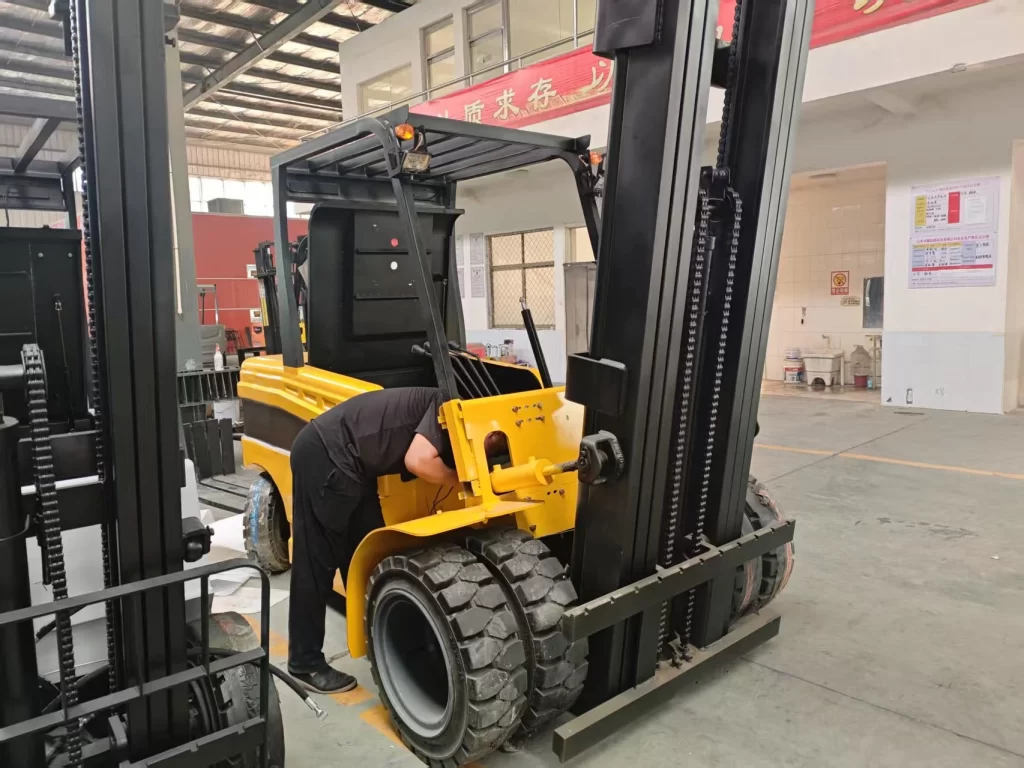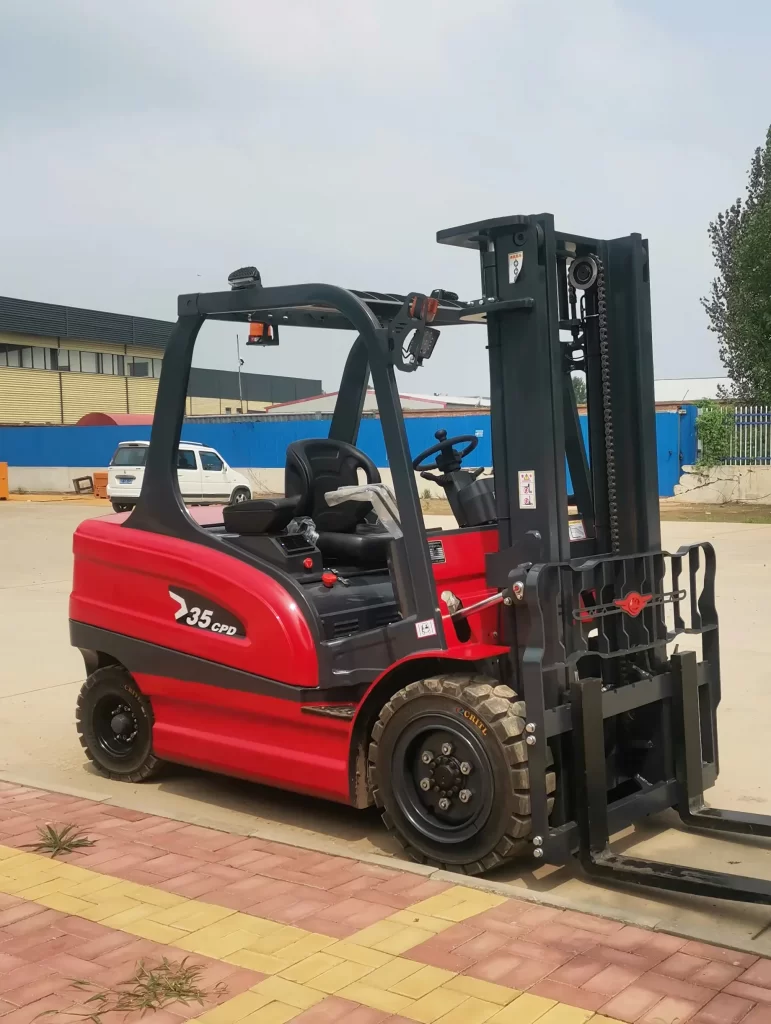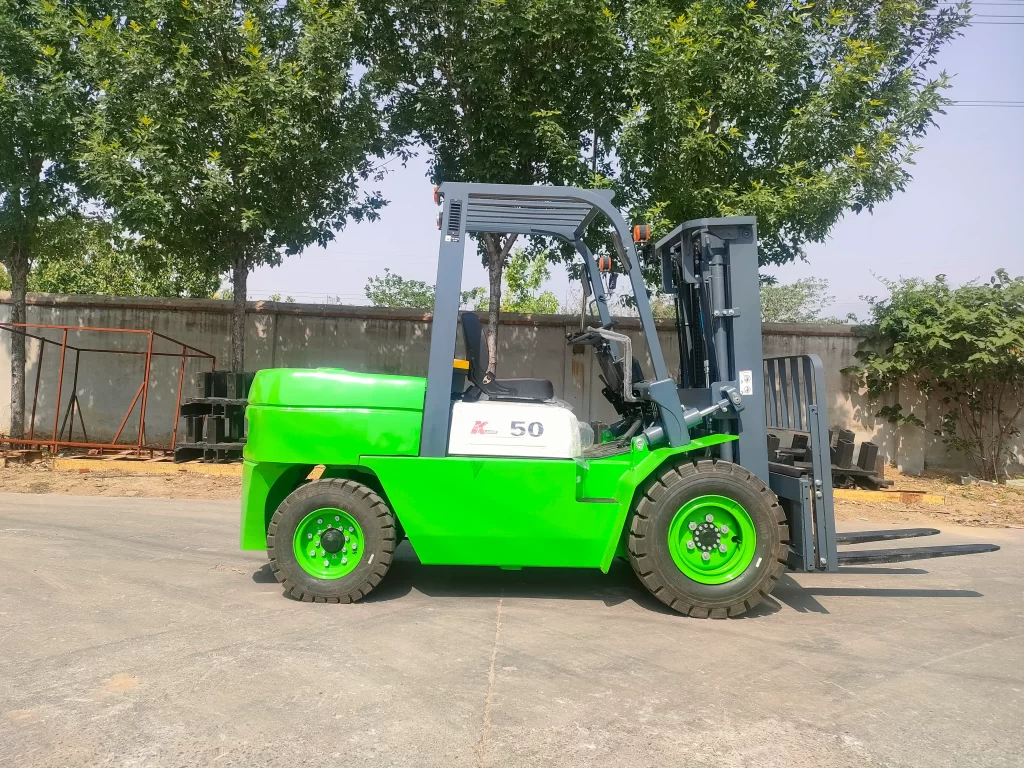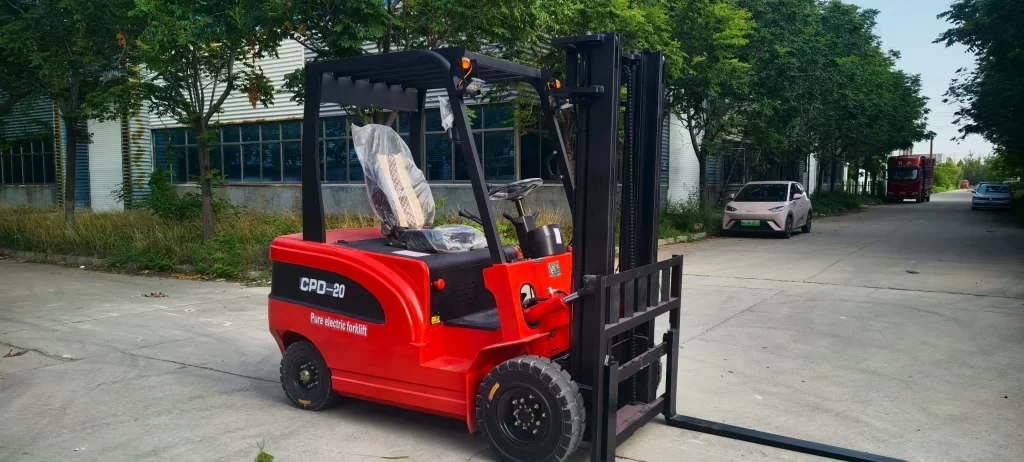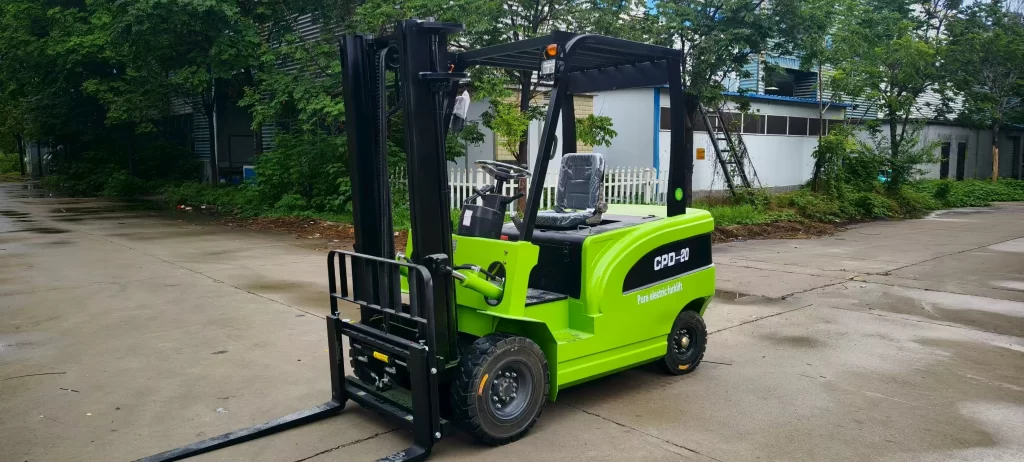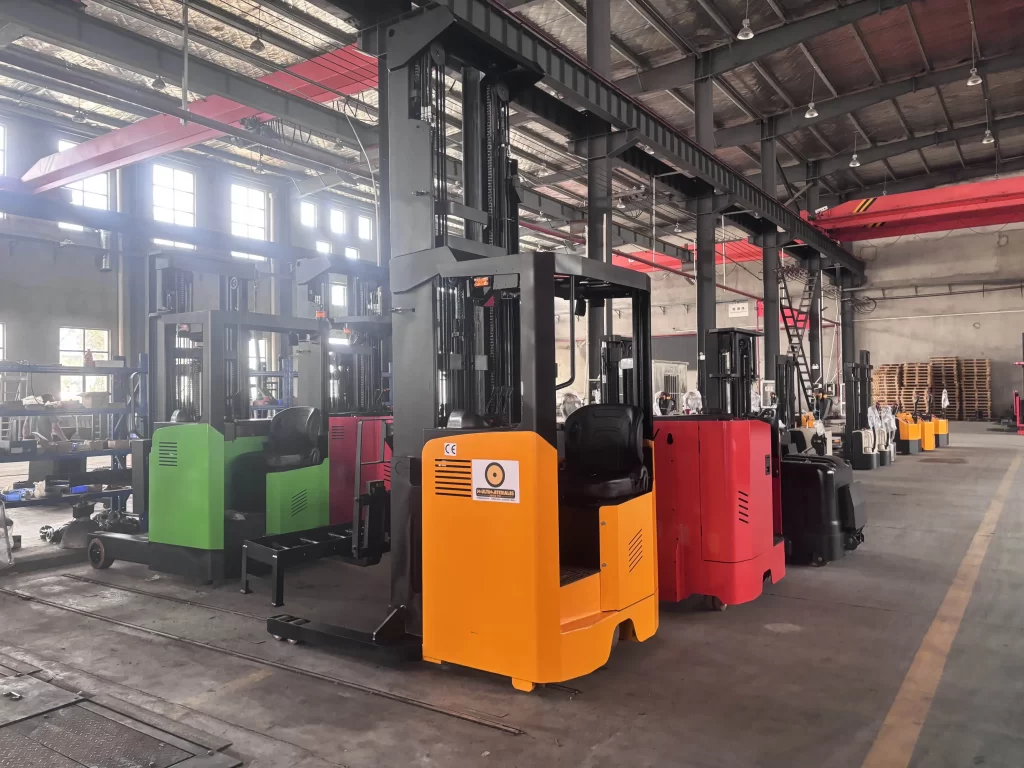What is an Electric Forklift and its Maintenance Guide
What is an Electric Forklift?
Battery-powered forklifts utilize rechargeable batteries as their primary power source to drive both the traction motor and hydraulic system motor, enabling both travel and material handling operations. Electric forklifts are loading, unloading, and material handling vehicles powered by direct current (batteries). The most significant advancement in new materials and processes is the application of transistor controllers (SCR and MOSFET). Their introduction has greatly enhanced the operational performance of electric forklifts. Overall, the durability, reliability, and adaptability of electric forklifts have significantly improved, making them fully competitive with internal combustion engine forklifts.
Electric forklifts can be categorized as: four-way electric forklifts, electric pallet stackers, hand-pushed electric lift stackers, electric tow tractors, three-point electric forklifts, four-point counterbalanced forklifts, reach trucks, three-point mini forklifts, ammunition counterbalanced forklifts, cold storage electric forklifts, electric explosion-proof forklifts, pedestrian counterbalanced forklifts, electric drum stackers, three-point straddle stackers, workstation cranes, four-point straddle stackers, four-point wide-leg stackers, pallet rack order pickers, four-point double-deck stackers, electric tow tractors, order pickers, and other electric material handling equipment.

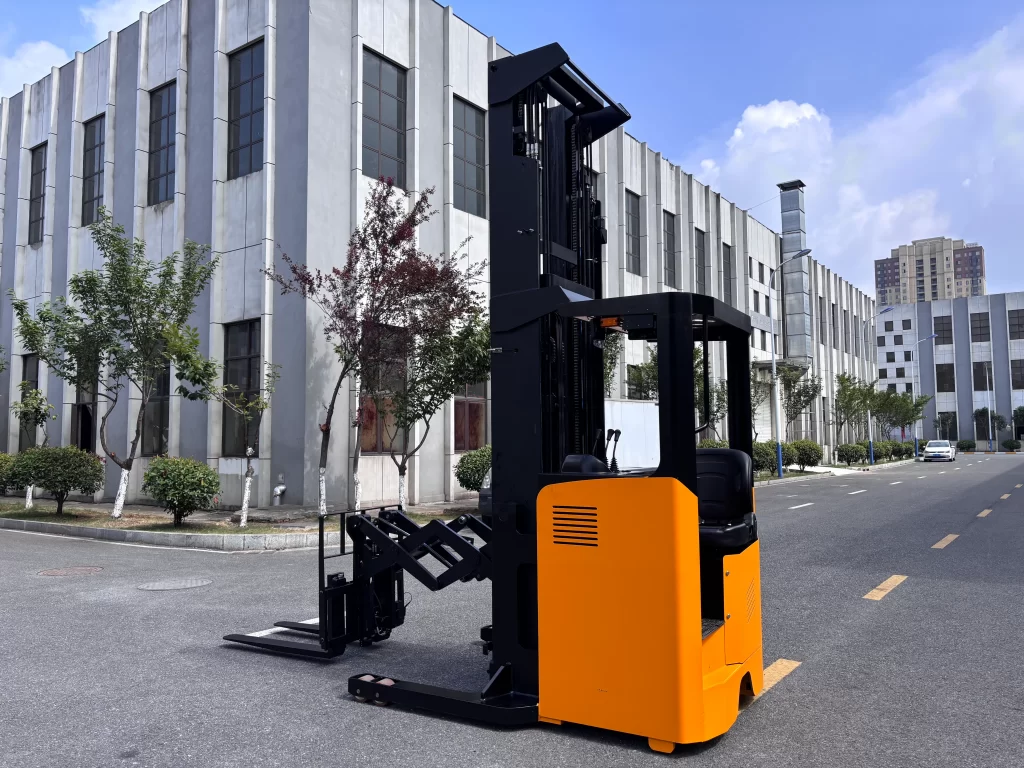
Electric forklifts offer simplified operation and enhanced maneuverability. Compared to internal combustion forklifts, they significantly reduce operator workload. Their electric steering systems, acceleration controls, hydraulic systems, and braking mechanisms are all electrically signaled, substantially lowering physical demands on operators. This greatly improves work efficiency and precision. Moreover, electric vehicles’ advantages of low noise and zero exhaust emissions have gained widespread recognition among users. Technical factors also drive the adoption of electric forklifts. Rapid advancements in electronic control technology have made electric forklift operation increasingly comfortable and versatile, offering more solutions for logistics challenges. Considering these aspects, market demand for electric forklifts will undoubtedly grow at an accelerating pace, expanding their market share. Powered by electricity, electric forklifts offer advantages over internal combustion models, including pollution-free operation, ease of use, energy efficiency, and high performance. Driven by economic growth and heightened environmental and energy conservation demands, electric forklifts are experiencing rapid development. Market sales have been rising annually. Particularly in ports, warehousing, and industries such as tobacco, food, and light textiles, electric forklifts are progressively replacing internal combustion models.
Electric forklifts, as indispensable equipment in modern logistics and warehousing, play a vital role in enhancing operational efficiency and reducing labor costs. To ensure their reliable operation and extend their service life, proper maintenance is crucial. Below are key guidelines for maintaining electric forklifts.
Regular Inspection and Maintenance
1. Battery Maintenance: As the primary power source, batteries require regular checks of charge levels and charging status. Ensure secure connections and maintain normal operation. Clean battery terminals to prevent corrosion. Replace batteries immediately if bulging occurs.
2. Lubrication System: Maintain the lubrication system’s functionality by lubricating critical components such as axles and hinge points to minimize wear and friction.
3. Braking System: Conduct regular inspections to ensure brakes respond promptly and reliably. Address any abnormalities promptly through repair or replacement.
4. Tire Inspection: Check tire wear and maintain proper tire pressure to ensure forklift stability and maneuverability.

Daily Operation Maintenance
1. Operator Training: Ensure forklift operators receive professional training to master correct operating procedures and prevent equipment damage from improper operation.
2. Temperature Control: When operating in high-temperature environments, monitor forklift heat dissipation to prevent overheating that could affect normal operation.
3. Load Capacity: Strictly adhere to the forklift’s maximum load limit. Overloading may cause equipment damage and hazards.
Specific Maintenance Considerations
1. Battery Maintenance: Regularly check battery fluid levels and replenish with distilled water to maintain proper levels. Avoid deep discharges to prevent damage. As a professional forklift manufacturer, we offer maintenance-free lead-acid dry batteries, simplifying electric forklift upkeep.
2. Electrical System: Regularly inspect wiring and connectors to ensure proper electrical function. Immediately cease operation upon detecting electrical faults and have them repaired by qualified technicians.
3. Lifting System: Maintain smooth operation of the lifting system. Periodically inspect lifting chains, hydraulic systems, cylinders, hydraulic reservoirs, and seals to ensure seamless lifting. Simultaneously check for oil leaks. We provide
4. Cleaning Maintenance: Keep the forklift clean by regularly removing dust and grime to prevent debris from entering critical components and affecting normal operation.
Maintaining electric forklifts not only reduces downtime and repair costs but also ensures workplace safety and production efficiency. When performing maintenance, strictly follow the manufacturer’s maintenance manual and recommendations. Seek assistance from professional technicians if needed. Through proper maintenance, electric forklifts can remain in optimal condition, creating greater value for your business.
We are a professional manufacturer of electric forklifts, offering models with lifting capacities ranging from 1.5 tons to 10 tons and lifting heights from approximately 3 meters to 8 meters. We can customize various forklift functions, colors, and logos for our customers.
